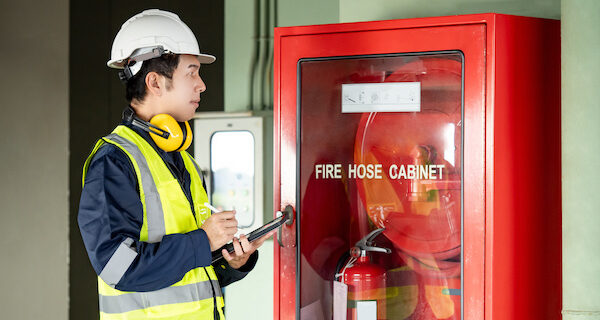The Future Of Safer Building Inspections

Facility managers overseeing apartments, senior living communities, and student housing face a common frustration: permit inspection delays that stall critical repairs and renovations. These traditional on-site permit inspections create scheduling headaches and slow down urgent facility improvements. Today, virtual inspection technology transforms this landscape, making permit assessments faster and more efficient for facility operations. When a water heater fails or an HVAC system needs replacement, waiting weeks for an inspector to verify code compliance can disrupt operations and inconvenience residents.
Permit Inspection Challenges For Facility Managers
Unpredictable inspection timelines derail maintenance schedules and renovation projects for building management teams. Property improvements stall while waiting for inspectors to verify compliance, creating cascading delays that affect budgets, resident satisfaction, and building operations. These delays force facility managers to reschedule contractors, extend project timelines, and manage resident expectations during prolonged disruptions.
These risks increase when inspecting buildings in disaster-prone areas or examining structures after natural disasters. Beyond safety concerns, traditional inspections involve significant travel time between sites. This reduces productivity and contributes to greenhouse gas emissions from vehicles. For facility managers and contractors, these inspection challenges translate directly to project delays, increased costs, and liability issues.
Virtual inspection technology proves its value during disaster recovery efforts. After hurricanes, fires, tornadoes, and other natural disasters, communities face urgent rebuilding needs amid hazardous conditions. Traditional inspection methods often struggle in these scenarios due to damaged infrastructure, safety concerns, and the sheer volume of inspections needed. Virtual inspection platforms allow qualified inspectors to assess multiple properties quickly without navigating debris-filled streets or entering structurally compromised buildings. This acceleration helps communities rebuild faster while maintaining safety standards, getting displaced residents back into their homes sooner, and businesses operational again more quickly.
The inspection bottleneck creates serious delays for facility managers overseeing renovations and maintenance. In many areas of the United States, permits should be issued within 30 days, but the current processing times stretch to four months or longer. These delays increase project costs and postpone much-needed facility improvements. This issue has gained national attention, with recent proposals for permitting reform aimed at streamlining the construction approval process.
Technological Solutions Enhancing Safety
Using high-definition video streaming, cloud storage, and mobile applications, inspectors can now conduct thorough assessments without physical presence at hazardous sites. These digital tools allow inspectors to examine building elements in real-time through video calls with on-site contractors and facility managers. When evaluating virtual inspection platforms, facility managers should look for solutions that offer automatic geo-tagging, photo and video recording, and secure cloud storage to create comprehensive documentation of each inspection.
Virtual inspections support immediate results and reports, real-time submittals, auto-notifications, and payment receipt documentation. This technology improves upon the disconnected back-and-forth communication common in traditional inspection processes.
The safety benefits extend beyond facility management to all construction professionals. Roofing contractors, for example, no longer need to wait for inspectors to climb to dangerous heights on unstable surfaces. Inspectors avoid navigating construction sites with falling debris and exposed electrical systems. Weather conditions like rain and extreme temperatures no longer delay critical inspections.
Virtual inspection technology delivers significant environmental benefits by eliminating unnecessary travel between sites. This reduction in travel directly decreases vehicle emissions that contribute to climate change. The time saved from not driving around town allows contractors to start and complete more projects, increasing overall productivity and helping address project delays for apartments, small businesses, and other facilities faster.
A typical permit inspector might visit 5-10 sites daily, driving hundreds of miles weekly. Virtual inspections can reduce this travel by up to 70%, significantly decreasing the carbon footprint of the inspection process. With thousands of inspectors nationwide, this technology could remove millions of vehicle miles from roads annually, making a measurable impact on greenhouse gas emissions.
These platforms accelerate development by eliminating scheduling conflicts, reducing paperwork, and enabling immediate feedback. As an example, facility managers using these systems can complete HVAC system permit reviews in as little as 48 hours, compared to the months required through traditional channels.
While not all inspections can be conducted virtually, many routine assessments are well-suited for remote technology. Simple electrical, plumbing, and HVAC inspections, along with kitchen and bathroom remodels, pools, re-roofs, and decks, can typically be handled remotely. More complex inspections involving large foundations, structural framing, and specialty systems still require on-site expertise. However, even these can benefit from preliminary virtual assessments that identify issues before physical inspection.
The Future Of Safe Building Inspections
Facility managers should consider several factors when implementing virtual inspection technology: training requirements for staff using new digital tools, compatibility with existing building management systems, and security protocols for storing inspection data. For facility managers, embracing these technological advancements means safer operations, reduced liability, faster project completions, and alignment with sustainability goals. The construction industry’s digital transformation is not just about keeping pace with technology—it’s about protecting the people who ensure our buildings remain safe while addressing critical societal needs like affordable housing and environmental protection.
By Ian Cohen
Cohen is the President and Chief Operating Officer at Inspected.com, bringing over 20 years of senior leadership experience to his role. His background spans business transformation, growth management, and strategic planning across technology, SaaS, e-commerce, and real estate sectors. Ian excels in developing innovative growth strategies, managing P&Ls, and leading restructures.

